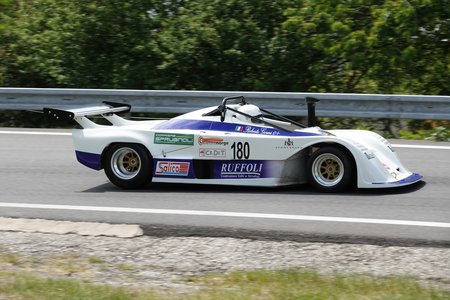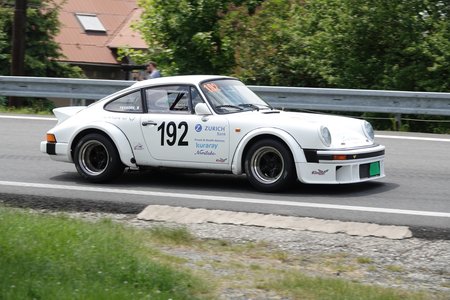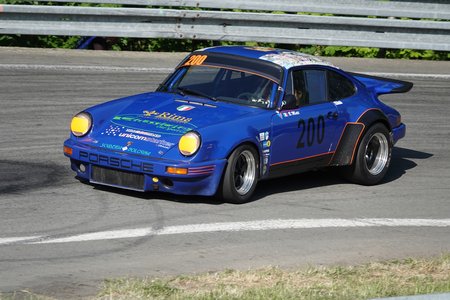

The annual holiday of the domestic climbing year belongs to the races for European points in Ecce Homo Šternberk 2023 race, which is part of FIA European Hill Climb Championship – actually almost regularly since 1981 – except for the COVID cancelled season. Because once again the engines of those incredibly fast and beautiful cars roared, so close to us, so freezing... Once again, we have to take our hats off to the great courage of the pilots, who up the hill in a tangle of turns playfully exceed the average speed of almost anything that drives in our country throughout the year, not only on both autodromes together. Yes, the feast of Ecce Homo has come and is still blooming in us. And what memories remain this year?










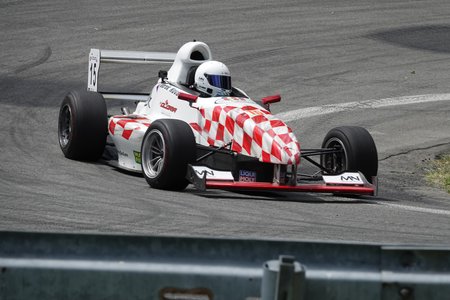





New European Championship rules try to slow down the fastest cars. How did it happen? Speed limit, higher weight, higher ground clearance... The reigning champion of the old continent, Christian Merli, is half a second slower in Saturday's training runs compared to last year... And in the race for his track record from last year, he will eventually lose a whole second. Was the regulation change worth it? Maybe yes, because Miloš Beneš or Petr Vítek, who collected European points, preferred to go to MČR. Maybe that was the goal, if not, it didn't make any sense.
















While in the single-seaters Merli had it clear when his teammate Hin was losing, among the sports cars it was real racing. Everything that had covered wheels with the rider hidden behind a wide protective arch was interesting there. All home fans wanted Petr Trnka to win with the Norma M20FC, but it was definitely not a walk in the park. That is, if we ignore the walk with the dog, who offered to walk Peter right at the first race. Fortunately, everything turned out well, the ride was repeated and the dog changed his mind about running around the track. Petr broke away in the corrective run to the national record and outran his opponents. But in the second run, it was Joseba Iraola who put on a blistering pace, took advantage of Peter's skid and set a record time for Nova cars. Yes, at Norma Simone Faggioli has a historically better time, which we miss a lot on the hills, we don't even know
















The nimble Corentin Starck, the Belgian ace in hill climbs, rides brilliantly, but Šternberk just didn't suit him this year. Problems with the electronics on Saturday and withdrawal on Sunday was a sad point for the yellow prototype in our parts. Do you remember him from the 2016 FIA Master? He has accelerated a lot since those days with the two-litre... At that time, he beat Petr Trnka, who was driving a similar Norma Honda car.
















The fastest two-litre car at Ecce Homo was not driven by Petr Vondrák, but by the Austrian Christoph Lampert. His Nova NP01 with an interesting engine had no competition in its class. A supercharged Hayabusa with almost half the engine specially rebuilt will cost a million, but it's definitely worth it if you want to win. Lampert finished right behind the names and Beneš and Hin, beating Sebastian Petit. Here, this very well-known Frenchman beat his last year time by two seconds behind the wheel of the brand new Osella PA30. However, his personal best from 2017 remained intact. Fausto Bormolini presented a brand-new weapon, the Nova NP01 car with a steering wheel in the centre of the car. He's still getting used to it, but it's getting better with each ride. Although nine years ago he was two seconds faster, but he will surely catch up within a year. Ninth place absolutely belonged to Vašek Janík, which finally has the right engine after a long wait. In addition to the penalty for the absence of an engine speed meter, he was 10 seconds short of his maximum. Hopefully it will also be able to be downloaded soon. Tenth at the finish line did not get under 3 minutes for the ride. Joel Burgermeister led the two-litre Tatuus F4 to the finish line.
















Excellent times were achieved by the excellently prepared Zdeněk Chudoba with the two-litre Norma and this time he did not give his numerous rivals much reason to wonder if they would be enough for him. And we can probably say that the ever-accelerating Karel Berger with the one-litre Osella PA21 JrB set the traditionally two-litre plates on fire. Except for Zdenek, he beat everyone and came close to the record in his class, which was set last year by the Spaniard Gonzalo Cabaňas. Even though Tereza Machová was unable to follow up on the victory from Saturday's Ústí nad Orlicí, we still witnessed a beautiful fight for the women's record at Ecce Homo. In the modern history of the race, it was surpassed six times in a row by Helga Heinrich, then Petra Wolpert, Renate Sieber, Angela Vilariňo... Edita Prášková was able to move its value three times, so that after eleven long years the next star of our hills, Kristýna Fillová, would rise. She broke the record last year and managed to improve twice this year. In the last run of the day, it was Tereza Machová, who was the first woman to break the three minute and twenty second mark. And if we counted ten girls in the starting list, it's great. And do you know why? Because they didn't go there for quotas, they just wanted to race! And they obviously had a great time.







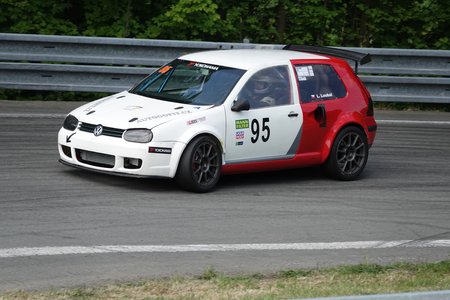






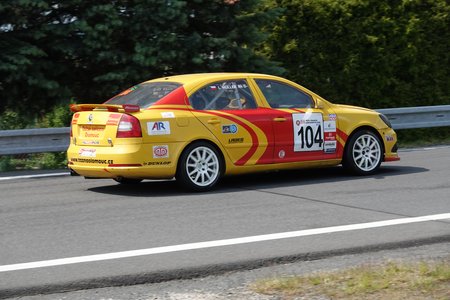

In single-seaters, we saw three F3000 single-seaters. while Renzo Napione unfortunately did not finish the race in the end, Jiří Svoboda was more successful in the battle between the two Lola cars with his former car after Dušan Nevěříl, ahead of Martin Juhás, who for a change chased the car after Jaro Krajčí. But young hope Josef Hlavinka with Gloria C8F took a lot of seconds from both of them.



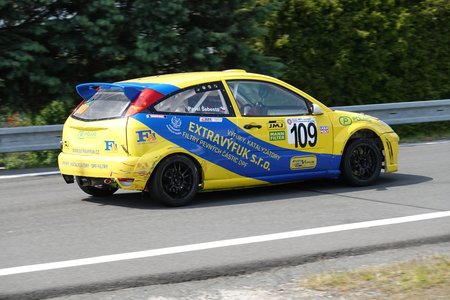
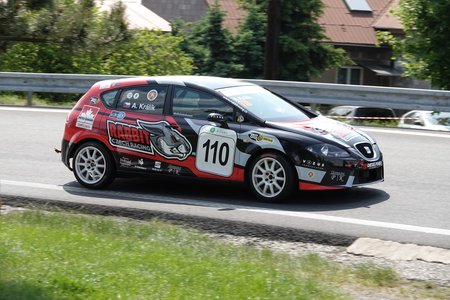











The fastest Porsche in Ecce Homo history was piloted by Nicolas Werver from France, but unfortunately in the second run he made a braking error before the Sojkova bend and hit the barriers. Although he continued, the dreams of placement evaporated. Outside of the ME standings, David Komárek with his McLaren F1 Evo flashed his times. The Komvet team knows how to build cars, and the second fastest time in the history of drivers with a roof over their heads is a clear proof of that. Actually third, if we count the training time of Karel Schagerl, whose car caught fire in Sunday's race, similar to Peter Ambruz's. Marek Rybníček, the winner of group PF2, showed a traditionally top performance. Polish driver Jedrzej Szczesniak surprised with his Lamborghini Huracan among the Mitsubishis that were overcome, and Luca Gaetani's Porsche from Italy was also pleasing to the eye.
















For a while it looked like a battle for the throne between the historic cars, but in the end Piero Lottini with the Osella PA9/90 didn't give room for speculation even to the second fastest Jaroslav Prášek with the Chevron B42.







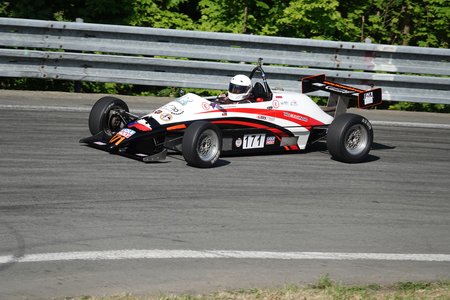







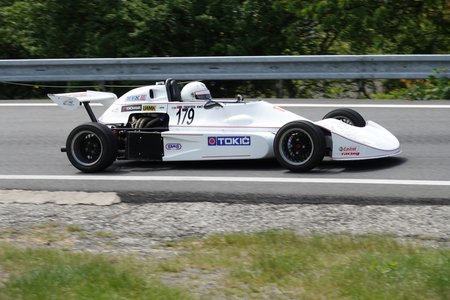
184 cars and drivers were taken over, but Peter Kaczinsky only made it to the preparation area and his car had to be towed away before the first practice and we never saw him again. Another four drivers did not start the race and 24 retired. Nevertheless, 155 classifieds is a beautiful result. So it's clear that the riders have written countless new stories for us, but maybe we'll talk about that sometime next time. Thanks to all riders and organizers for a wonderful experience! And now it's time to go to Ascoli, to Vrbno pod Pradědem...
